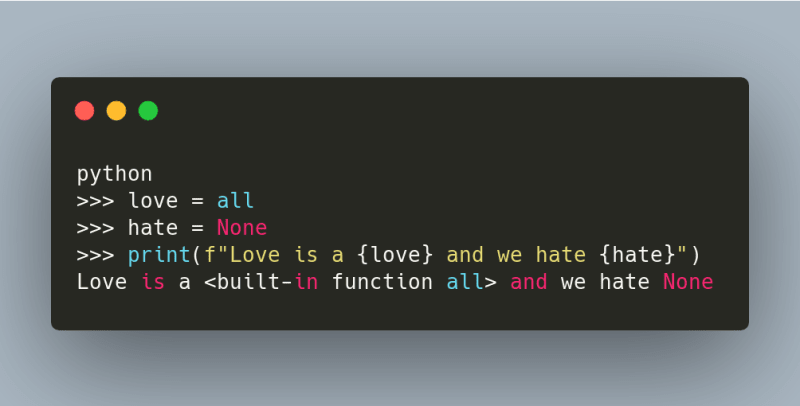Past week, I was busy coding in Python for one of our demos (which turned into a blog post later). At one point, I was recalling the syntax and thought why not spread some ❤️ with code. The very basic rule is not IDE whatsoever
Python is one programming language where you have the freedom to express yourself until you adhere to the indentation 😉
So, here's what I did on my command line
all() Function
Python all() Function: The
all()function returns True if all items in an iterable are true, otherwise, it returns False. If the iterable object is empty, theall()function also returns True.
None
None equals to null or no value. It is not 0, False, or an empty string. Try
type(None), you will see the fun.



Top comments (0)